I'm working on a smaller project and got stuck on an issue, I'm not really sure if it's possible to solve it in NetLogo but I want to give StackOverflow a go!
I got a model that divides the world into different parts and randomly add physical features (such as rivers). If a feature goes through the whole region, I want it to separate the region and make into two regions. As an example, in the picture below, I want to separate the purple region into two unique regions accordingly to the physical feature (black).

The code I used to generate the picture above, can be found below.
to setup
ca
;Setting world.
resize-world 0 19 0 19
;Creating regions.
let x 5
let y 5
let col 45
while [y <= max-pycor + 1][
while [x <= max-pxcor + 1 ][
ask patches with [pxcor < x and pxcor >= x - 5 and pycor < y and pycor >= y - 5][
set pcolor col
]
set x x + 5
set col col + 10
]
set x 5
set y y + 5
]
;Generating physical features.
ask n-of 5 patches[ sprout 1[
set pcolor black]
]
let i 0
while [ i < (max-pycor * 2 )][
ask turtles [
fd 1
set pcolor black
ifelse (random 20 <= 1)
[
rt one-of [-90 0 90]
forward 1
]
[
fd 1
set pcolor black
fd 1
set pcolor black
]
set pcolor black
set i i + 1]
]
ask turtles [die]
end